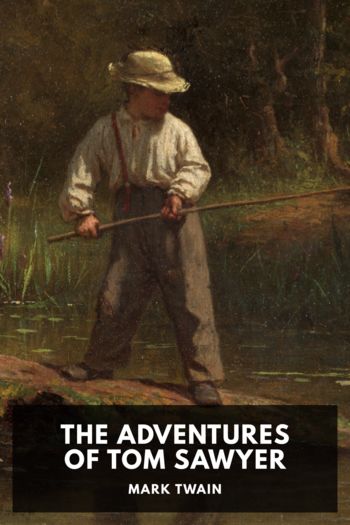The Autobiography of Mark Twain by Mark Twain (good book recommendations .TXT) 📕

Description
The Autobiography of Mark Twain is a collection of reminiscences and reflections. Twain began dictating them in 1870, and in 1906 he published Chapters from My Autobiography in twenty-five installments in the North American Review. He continued to write stories for his autobiography, most of which weren’t published in his lifetime due to a lack of access to his papers, or their private subject matters. After Twain’s death, numerous editors have tried to organize this collection of published and unpublished autobiographical works, producing various differing editions. The most recent attempt is by the Mark Twain Project at the University of California, Berkeley, which published a three-volume edition; but, through what many consider legal trickery, the University of California, Berkeley has claimed copyright on that edition until 2047—137 years after Twain’s death.
This Standard Ebooks production is based on Harper and Brothers’ 1924 collection, compiled by Albert Bigelow Paine.
Read free book «The Autobiography of Mark Twain by Mark Twain (good book recommendations .TXT) 📕» - read online or download for free at americanlibrarybooks.com
- Author: Mark Twain
Read book online «The Autobiography of Mark Twain by Mark Twain (good book recommendations .TXT) 📕». Author - Mark Twain
Villa di Quarto is a palace; Cosimo built it for that, his architect intended it for that, it has always been regarded as a palace, and an old resident of Florence told me the other day that it was a good average sample of the Italian palace of the great nobility, and that its grotesqueness and barbarities, incongruities and destitution of conveniences, are to be found in the rest. I am able to believe this because I have seen some of the others.
I think there is not a room in this huge confusion of rooms and halls and corridors and cells and waste spaces which does not contain some memento of each of its illustrious occupants, or at least two or three of them.
We will examine the parlor at the head of that long perspective which I have been describing. The arched ceiling is beautiful both in shape and in decoration. It is finely and elaborately frescoed. The ceiling is a memento of Cosimo. The doors are draped with heavy pale-blue silk, faintly figured; that is the King of Würtemberg relic. The gleaming-white brass-banded, porcelain pagoda which contains an open fireplace for wood is a relic of the Russian princess and a remembrancer of her native experiences of cold weather. The light-gray wallpaper figured with gold flowers is anybody’s—we care not to guess its pedigree. The rest of the room is manifestly a result of the present occupation. The floor is covered with a felt-like filling of strenuous red; one can almost see Pharaoh’s host floundering in it. There are four rugs scattered about like islands, violent rugs whose colors swear at one another and at the Red Sea. There is a sofa upholstered in a coarse material, a frenzy of green and blue and blood, a cheap and undeceptive imitation of Florentine embroidery. There is a sofa and two chairs upholstered in pale-green silk, figured; the wood is of three different breeds of American walnut, flimsy, cheap, machine-made. There is a French-walnut sofa upholstered in figured silk of a fiendish crushed-strawberry tint of a faded aspect, and there is an armchair which is a mate to it. There is a plain and naked black-walnut table without a cover to modify its nudity; under it is a large round ottoman covered with the palest of pale-green silk, a sort of glorified mushroom which curses with all its might at the Red Sea and the furious rugs and the crushed-strawberry relics. Against the wall stands a tall glass-fronted bookcase, machine-made—the material, American butternut. It stands near enough to the King of Würtemberg’s heavy silken door-drapery to powerfully accent its cheapness and ugliness by contrast. Upon the walls hang three good watercolors, six or eight very bad ones, a pious-looking portrait, and a number of photographs, one of them a picture of a count, who has a manly and intelligent face and looks like a gentleman.
The whole literature of this vast house is contained in that fire-auction American bookcase. There are four shelves. The top one is made up of indiscriminate literature of good quality; the next shelf is made up of cloth-covered books devoted to Christian Science and spiritualism—forty thin books; the two remaining shelves contain fifty-four bound volumes of Blackwood, in date running backward from about 1870. This bookcase and its contents were probably imported from America.
The room just described must be dignified with that imposing title, library, on account of the presence in it of that butternut bookcase and its indigent contents. It does duty, now, as a private parlor for Mrs. Clemens during those brief and widely separated occasions when she is permitted to leave for an hour the bed to which she has been so long condemned. We are in the extreme south end of the house, if there is any such thing as a south end to a house, where orientation cannot be determined by me, because I am incompetent in all cases where an





Comments (0)